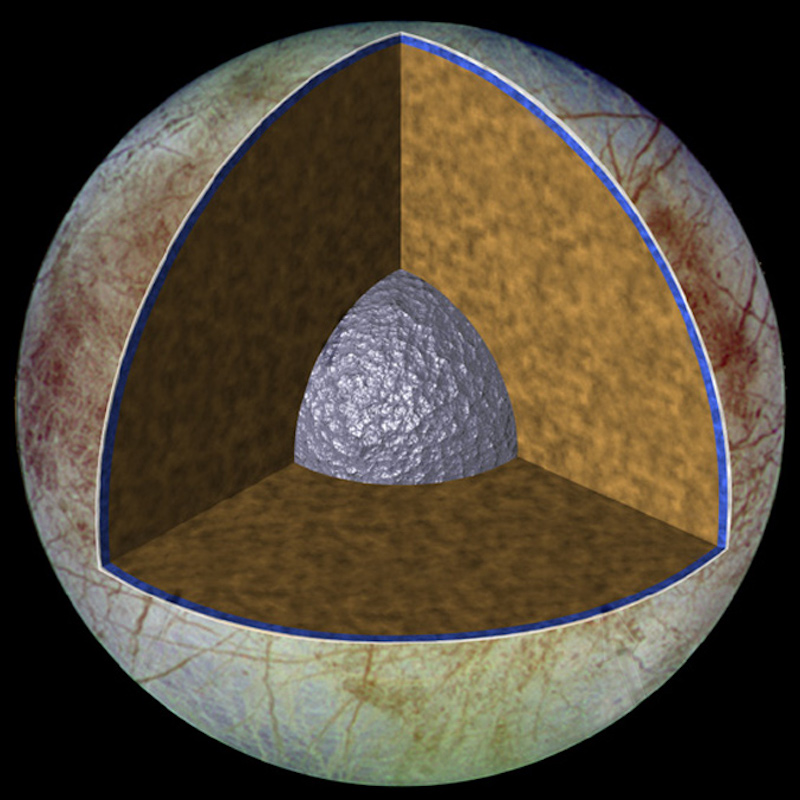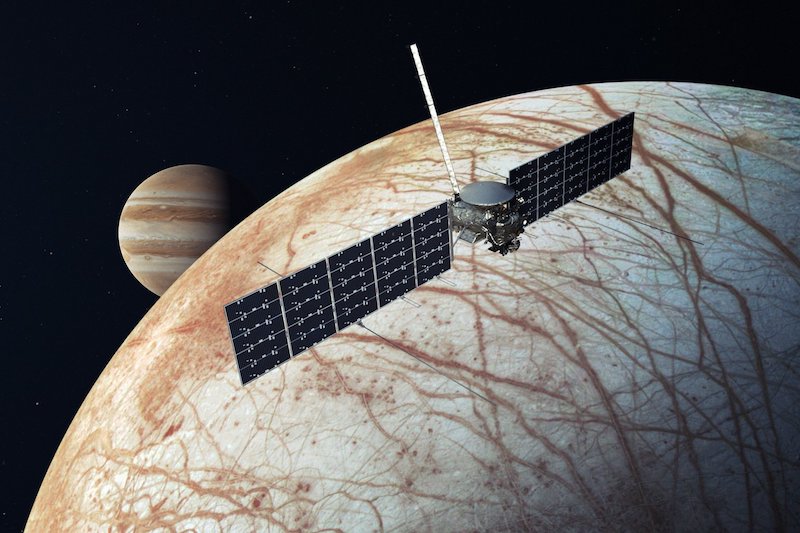
Europa’s habitability and its core
Jupiter’s moon Europa is considered to be one of the best places in our solar system to look for life beyond Earth. The moon’s subsurface global ocean might be similar to earthly oceans. So has life formed in Europa’s oceans? On June 16, 2023, a new study from Arizona State University suggested … maybe not. Europa might have experienced a slow evolution, with its metallic core forming later than thought. The core is critical to the question of the moon’s ability to support life, because it relates to Europa’s interior heat and to possible deep-sea, hot-water vents on its seafloor, around which life might emerge.
Lead author Kevin Trinh at Arizona State University led the research team, along with Carver Bierson and Joe O’Rourke.
The journal Science Advances published the researchers’ peer-reviewed findings on June 16.
What kind of rocks?
Scientists have assumed that Europa’s ocean had a metamorphic origin. That is, the rocks on its sea floor might have formed after being subjected to high heat, high pressure or hot mineral-rich fluids. But Trinh and his colleagues used new computer models to reach a different conclusion. Their work suggests the ocean might have had a cooler origin, involving hydrated rocks containing hydrogen and oxygen.
So it’s possible Europa formed as a cold mixture of ice, rock and metal. The study showed that this formation process could still have led to the rocks releasing enough water to form both Europa’s ocean and outer ice shell.
So now there are two models for how Europa formed, and how its oceans came to be.
That’s important, because how Europa’s ocean originated relates its present habitability, as Trinh explained:
The origin of Europa’s ocean is important because the moon’s potential to support life ultimately depends on the chemical ingredients and physical conditions during the ocean formation process.
Core and hot-water vents
There are also two other factors that could affect Europa’s ability to support life in its oceans. Those are a metallic core and hydrothermal activity on the ocean floor.
Scientists have long thought that Europa developed a metallic core early on in its formation. The new study, however, suggests that maybe it didn’t. As the paper explains:
While many studies have assumed Europa to have a metallic core, we show that metallic core formation is an expected but not guaranteed outcome. Our models never reach the high temperatures necessary to start metallic core formation …
A metallic core would require inner heat on Europa. That same heat can help drive hydrothermal activity on the ocean floor. This would be much like hydrothermal vents on seafloors on Earth. This, in turn, creates a habitable oasis for living organisms, providing heat and nutrients.
So, if there was less heat than thought, then that could mean less hydrothermal activity. And less hydrothermal activity – fewer hot-water vents on the ocean floor – suggests a less habitable environment in Europa’s ocean.
A different origin for Europa?
If the core formed much later – or if there is no core at all – that might also indicate a lack of necessary heat. That would indicate that Europa formed differently than previously assumed. Bierson, a postdoctoral research scholar at ASU’s School of Earth and Space Exploration, said:
For most worlds in the solar system we tend to think of their internal structure as being set shortly after they finish forming. This work is very exciting because it reframes Europa as a world whose interior has been slowly evolving over its whole lifetime. This opens doors for future research to understand how these changes might be observed in the Europa we see today.
Europa is a small moon, 4.1 times smaller than Earth, with only about 1% the mass of Earth.
So it’s possible that it didn’t have enough heat for all the processes that would increase habitability: metallic core formation, hydrothermal activity and water-rock geochemistry (for chemical nutrients).
Europa does have internal heat today thanks to tidal heating from Jupiter. But how Europa formed also affects how much heat it gets from the radioactive decay of a short-lived isotope of aluminum.

Europa Clipper
At this point, we still don’t know for sure how much internal heat Europa had during its formation. But the upcoming Europa Clipper mission will be able to make a better determination.
Europa Clipper is scheduled to launch in October 2024 and arrive at Europa in April 2030.
Bottom line: Researchers at ASU say that Europa may have formed slower than thought, with less interior heat. That could affect the potential habitability of its ocean.











